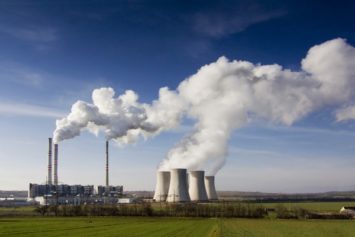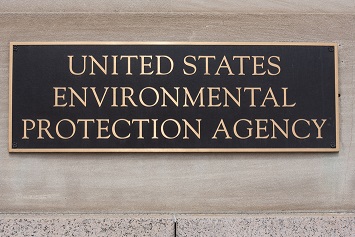In an action that ranks in importance with President Donald Trump’s withdrawal from the Paris Climate Accord, the U.S. Environmental Protection Agency (EPA) has formally repealed the Obama administration’s Clean Power Plan (CPP) and replaced it with the Affordable Clean Energy rule (ACE). Both actions are contained in the same rule along with a third set of regulations governing state implementation of the ACE.

Same Goal, Different Steps
The CPP and the ACE have the same nominal objective—to reduce emissions of greenhouse gases (GHGs) from existing coal-fired power plants. But the similarities stop there. While the CPP set specific numeric emissions reduction targets that states would have been required to achieve, the ACE allows states to set standards of performance for each of its affected power plants. Those standards must be based on a Clean Air Act (CAA) provision called best system of emission reduction (BSER). The CPP defined “BSER” as a package of pollution control measures; specifically, making heat rate efficiency improvements at power plants; substituting electricity generation from gas plants for generation from coal plants; and substituting electricity generation from zero-emitting renewable energy sources for generation from coal and gas plants. In contrast, under the ACE, the BSER is limited to heat-rate improvements that can be achieved with six “candidate technologies.” Actual GHG emissions limits are to be established by the states and will be plant-specific.
Also, while not explicitly stated by the Agency, the CPP was viewed by many as an avenue to phasing out coal-fired electric power. The ACE, on the other hand, can effectively prolong the life of existing coal-fired plants. For example, if, under the ACE, a state requires an older plant to install a specific heat-rate improvement (e.g., air heater and duct leakage control or variable frequency drives), the plant owner may view the investment as a reason to postpone retirement of the unit. Prolonging the life of a coal-fired power plant would have been unlikely under the CPP unless a plant undertook far more costly changes (e.g., conversion to natural gas and implementation of carbon capture and storage).
The EPA’s final action does not include changes to the federal New Source Review (NSR) program that had been proposed with the ACE. The Agency had sought to establish an hourly (as opposed to yearly) emissions test as a prerequisite to NSR permitting. The EPA says it will act on the NSR proposal at a future date.
CPP Repeal
Under Trump, the EPA has argued that the CPP exceeded the Agency’s authority under the CAA . The Agency states:
“Fundamentally, the CPP read the statutory term ‘best system of emission reduction’ so broadly as to encompass measures the EPA had never before envisioned in promulgating performance standards under CAA section 111. In contrast to its traditional regulations that set performance standards based on the application of equipment and practices at the level of an individual facility, the EPA in the CPP set standards that could only be achieved by a shift in the energy generation mix at the grid level, requiring a shift from one type of fossil-fuel-fired generation to another, and from fossil-fuel-fired generation as a whole towards renewable sources of energy. The text of the CAA is inconsistent with that interpretation, and the context, structure, and legislative history confirm that the statutory interpretation underlying the CPP was not a permissible construction of the Act.”
We can expect to see major legal challenges to this position. For example, in comments on the ACE proposal, the attorneys general (AGs) of 19 states, the District of Columbia, and several large cities stated that the EPA’s repeal of the CPP is arbitrary and capricious because power plants have long implemented switches from coal to gas and renewable energy and are continuing to do so specifically to reduce GHG emissions, among other reasons.
“The CPP record is replete with information supporting the viability of generation shifting ‘at’ and ‘by’ sources to reduce emissions at those sources, which EPA makes no attempt to rebut in its proposed rule,” stated the commenters. “By contrast, the proposed rule does not identify a single instance of sources using or even considering heat-rate improvements alone for the purpose of reducing CO2 emissions.”

Reductions
According to the EPA, the ACE, “combined with emission reductions expected from various other industry trends,” will reduce carbon dioxide (CO2) emissions from the electric sector by as much as 35 percent below 2005 levels in 2030. Other benefits include reductions in electric sector emissions of mercury and fine particulate matter (PM-2.5) precursors as well as any resulting mortality and morbidity effects (like cases of aggravated asthma, hospitalizations, emergency room visits, and nonfatal heart attacks).
Interestingly, the EPA notes that current market trends and other factors indicate that most states are on track to meet their CPP targets—even though the CPP was never implemented. The Agency says it modeled several scenarios for CPP implementation and assessed other evidence demonstrating there is likely to be no difference between a future scenario with the CPP and one without it.
But critics of the ACE argue that the Agency has no basis to make this assertion and, furthermore, it is a mistake to place the burden of setting numerical GHG emissions limits for plants on the states. For example, in their comments, the AGs say the ACE ignores the relative expertise and experience needed to set an emissions limitation and places a tremendous new burden on the states.
“In setting the BSER, EPA has already calculated emissions reductions available from a source category and has gained experience from analysis of various systems required to regulate new sources in that category (for which it must also establish new source performance standards). Therefore, as a matter of statutory interpretation and sound public policy, it is plain that the agency that has performed the analysis and quantification of available emissions reductions must set the numerical emissions limitation for that category of sources. A state would lack this information and analysis and instead be forced to develop an emissions limitation on its own. States will be faced with significant new demands on their resources, a burden which EPA glosses over in its proposed rule.”
More Plants, More Emissions
One critical issue is whether the ACE will, in fact, result in more coal-fired generation. This possibility was pointed out in one open-access article:
“Although the ACE reduces the emissions intensity of coal plants, it is expected to increase the number of operating coal plants and amount of coal-fired electricity generation, with 28 percent of model plants showing higher CO2 emissions in 2030 compared to no policy. As a result, the ACE only modestly reduces national power sector CO2 emissions and increases CO2 emissions by up to 8.7% in 18 states plus the District of Columbia in 2030 compared to no policy.”
An additional provision of the ACE that may further limit reductions concerns a plant’s remaining useful life and related factors. Specifically, the rule allows that states may establish emissions limits that are less stringent than those dictated by the BSER. In addition to remaining useful life, factors that a state may apply in such a decision include unreasonable cost of controls or the physical impossibility of installing necessary control equipment.
Implementing Regulations
The Agency states that the new implementing regulations will “harmonize aspects of our existing regulations with the [CAA]…by making it clear that states have broad discretion in establishing and applying emissions standards consistent with the BSER.”
The new implementing regulations also provide changes to the timing requirements for the EPA and states to take action to more closely align with the CAA section 110 state implementation plan (SIP) and federal implementation plan (FIP) deadlines. Among the changes to existing regulations, the EPA is lengthening the time available for states to submit SIPs from 9 months to 3 years. The Agency has also provided more time for itself to both review submitted SIPs and issue FIPs in cases where states do not meet their SIP requirements. The ACE’s implementing regulations list the minimum elements states must include in their SIPs.
